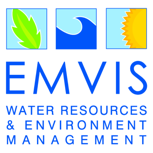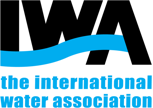Interview between Alkiviadis Giannakoulias and the International Water Association (IWA)
The Space-O project provides digital solutions for water reservoir managers and water utility operators. By combining satellite technology, hydrodynamic and hydrology modelling software and in-situ monitoring, SPACE-O translates state-of-the-art technology into digital tools tailored for end-users.
This project is only one example of digital innovation in the field of water management. It is one of many projects that break down what is possible with modern technology, to what is feasible to use for those responsible for resources management or service provision. Such feasibility to make use of advanced technology often depends on the specific local context and associated capacity of institutions to integrate such tools in their work flow.
We asked Alkiviadis Giannakoulias, Senior Research & Development Consultant at European Dynamics and member of the SPACE-O Consortium, about this digital trend and what it implies for the water sector. European Dynamics designed the software infrastructure and data visualization within SPACE-O.
IWA: Why have digital solutions for water problems become so important? How can they support day-to-day water management?
Alkiviadis: Digital solutions are becoming more and more important across our daily life and all aspects of our society. The trend of using online tools and platforms affected traditional sectors like water management that are now making use of IT solutions already available in other sectors. Therefore, digital solutions to water problems are not just important, but required to keep up with the general trend towards IT solutions.
The way that digital solutions can support day to day water management, is by digitizing manual labor processes; meaning updating paper based processes that are currently in place to digital ones. This was the methodology we followed in SPACE-O; we digitized the manual processes that water utility operators do in their daily life. Processes like e.g. taking measurements in a water body, then going back to the office and uploading the data in excel files. We transferred this process by installing and configuring hydrological and meteorological sensors in water bodies and the surrounding hydrological catchment, able to measure parameters like chlorophyll, conductivity, dissolved oxygen, pH, salinity, water temperature, wind direction, etc. These sensors (IoT devices) transmit their measurements in real time to an IT backend that aggregates and visualizes all the required information for the end user.
Using such an IT-based system, end users don’t have to populate lengthy excel spreadsheets and then manually create graphs and charts, as this is now done automatically for them. One of the developed and integrated applications in the SPACE-O portal is the “Early Warning System”, which can give a heads up to utilities regarding the foreseen water quality values, so they can plan ahead. This is something water utilities do on a daily basis, but using traditional means like visiting a website to see weather forecast information and apply their experience and knowledge about their territory to make predictions. These forecasts mainly rely on the experience and knowledge of operators. Using SPACE-O integrated forecasting applications, detailed forecasts are now possible, in real–time, without the need for end-users to have knowledge about forecasting and predictions.
IWA: How important is the input from end-users for the design of the SPACE-O platform?
Alkiviadis: Like all IT based applications, we had to respect the ‘development life cycle’; and the first step of this cycle is to gather requirements from the end-users. The target user groups of the online platform were identified, including a number of use cases illustrating the possible use of the platform. We have then interacted with the end-users (WTP operators as well as experts and authorities involved in the potable water supply industry) through case study workshops, resulting in a consolidated user’s requirements inventory. The SPACE-O Decision Support System (DSS) development team, lead by European Dynamics, received these requirements that directed the technical managers towards the implementation of services that are both visually appealing to the end-users and contain the desired functionalities.
IWA: Investment gaps and capacity building are common challenges for water utilities and new technologies usually come at a cost; why do you think local utilities like those you pilot would consider integrating this technology as a core component of their operations?
Alkiviadis: The costs are not the main limiting factor when you want to achieve a digital transition. The challenge is the change of mentality. The biggest obstacle is acceptance of this new IT-based approach. Resistance to change can be due to various factors including lack of trust in IT-systems and fear that human assets will be replaced by computer systems. Also, utility operators perceive data generated by their systems and processes as personal sensitive data, providing limited access to 3rd party applications.
The developed tool suit is open source and free of charge for all water utility operators. However, adaptation and fine-tuning to the specific needs of each water utility operator is required, resulting in customization services from the SPACE-O consortium. Water utility operators mainly have to invest in new hardware/sensors required for in-situ monitoring, which are relatively inexpensive.
IWA: What are your thoughts on the role of new technologies, like the use of blockchain technology in the water sector?
Alkiviadis: As mentioned earlier, some water utility operators perceive data generated by their systems and processes as personal, sensitive data that should not be shared with the public or any 3rd party applications. So the question is how can we safely share such information with other users?
One promising technology for doing so is the use of blockchain technology. Use of this technology is possible, not only for the water sector, but for all the important infrastructure sectors like energy and water, where information is sensitive/critical and should be treated as such. To give an idea, maybe in the future water customers receive their bills via ‘smart meter’ devices that directly communicate with the water utility IT-backend system the amount of water consumed. This is would also allow end-users to see in real time their water consumption, while securing the transfer of personal data.
At the same time, water operators would be able to quickly identify when there is a broken pipe. If operators know the water consumption patterns (increased consumption in the morning and reduced until the afternoon, seasonal maximum values of cubic meters of water, etc.), a sudden increase would be an indication of a leak/broken pipe. If implemented, such a smart metering solution requires certain privacy measures, because smart meters transmit customer details that are private data. One solution to that is blockchain technology, which could ensure that data is not manipulated in any way.
(Learn more about blockchain in the water sector in this blog by IWA)
IWA: Would the SPACE-O platform be able to incorporate such new technologies?
Alkiviadis: Yes, because the platform architecture ensures: scalability and flexibility. These are important keywords in any IT software development. Scalability means that we can manage increased demands (by deploying it in multiple locations/servers), and flexibility means we can add or remove services. The SPACE-O platform is both scalable and flexible to include new services and technologies. When new sensors or data sources enter the project, we can add them to the system and visualize the data according to end-user requirements. Our platform is based on functional building blocks, so one can add or remove building blocks to add or remove functionalities. In that sense, something like blockchain technology can be supported by adding a new block module to the platform that would handle the specific information exchange in a blockchain network.
This interview was conducted on July 9, 2018, between Alkiviadis Giannakoulias and Hanno Führen (on behalf of IWA). For an introduction to blockchain and how this technology can change water management, we recommend a blog written by Emma Weisbord, published via IWA here.









